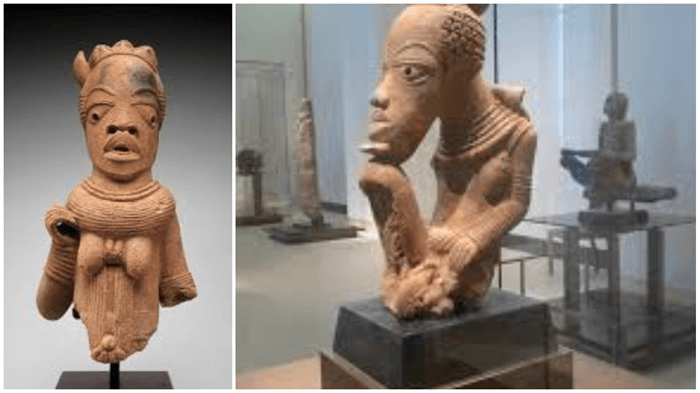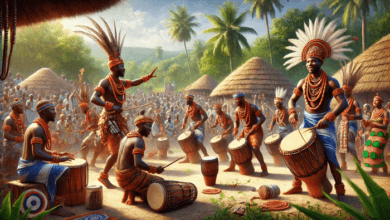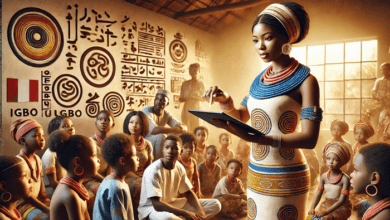How scientists discovered the first advanced human civilization in Nigeria

It is unfortunate that Africa is, to many people today, still seen as it was thought of in the Middle Ages — as a savage land. They have savages here who fight each other and epidemics that run in the streets and children that starve. Some people still find it hard to picture that there was a culture and civilization here first, before the white colonists showed up. It is difficult to acknowledge that this civilization had remarkable advancements, counting on scientific knowledge much more advanced than anything Europeans could have ever imagined. Even more so, archaeologists have indeed unearthed in Nigeria one of the most organised and developed civilisations in Africa …
It would sound ridiculous today, but this was the way all Europeans thought in the Middle Ages and even today some made it of blatant small-mindedness and snobbery. Without a doubt, Africa is a continent of extremes. Stupendous, marvelous wealth sits next to stultifying, not at all marvelous poverty. It is a pity that the colonizers left such an ugly mark in the history of the evolution of a continent that had its own way.
They were devouring the farmlands, they contained minerals in their bowels.’ Others were simply commodities, the local people exploited for centuries. Modern educated Europeans prefer not to think about this, nor about how everything was looted, and the history textbooks were written in a way that was beneficial for the elitist classes of Europe. What emerged this way was a deeply wrong opinion about the wildness and the pre-modern character of the people of these lands.
Modern history, as we know, is not only filled with facts that were previously little known in fact have debunked established stereotypes but new findings in this field. Take for instance the small village of Nok, in the Nigeria, back in 1928 tin miners made a rather astonishing discover. The stepped wells held an astonishing number of unique terracotta statues. Since then, the site has been excavated several times. Recent studies have found that these artifacts come from the 10th to the 5th centuries before Christ. This ancient civilization, named after the site at which it was discovered, Nok, was one of the earliest highly developed civilizations on the planet, scientists say.
The Nok were an incredibly advanced civilization with the most advanced court system one could dream of. They have also been recognized as the earliest known creators of life-size terracotta sculptures south of the Sahara. Archaeologists have still discovered stone tools, cave paintings and iron implements, such as richly wrought spearheads, exquisite jewellery and little blades. The ancient civilization appeared in the 10th century BC but mysteriously disappeared in the 2nd century.
Terracotta statues
The terracotta statues are easily the most mysterious and compelling pieces of Nok culture. Archaeologists have called them ‘extraordinary, amazing, timeless, eternal and almost extraterrestrial’. The faces feature long heads with slanted sunken eyes and slightly parted lips. These unusual features, especially considering the statues were made in exact proportions of a head, body and legs, have led some to refer to them as having an ‘extraterrestrial appearance’.
Ceramic figurines from the Nok culture portray individuals suffering from organic disease, including elephantiasis or facial nerve palsy. To this day we don’t know the specific use of these ‘sick’ images. Perhaps, it would have been set up as a safeguard against diseases, but this remains highly speculator.
When the clay used to make the terracotta is examined microscopically, it is found to be extremely homogeneous across all Nok. This implies that it originated from the same, still-unfound source. The purpose of these bizarre sculptures is a mystery. Some scholars have theorized that the statues were employed as magical charms to counteract hunger, disease and infertility. Meanwhile, others think they instead symbolize high-status individuals who were worshiped.
The establishment of life-size terracotta statues, of course, is by no means the only evidence of the evolution of their society. Research revealed that the Nok people had a well-developed system of government to maintain law and order and other functions.
Advanced metalworking
The extensive metalworking capabilities of the Nok civilisation are well known, they were highly advanced for their time. Artisans used iron and copper alloys to create highly elaborate objects, including jewellery, art, and weapons. They could employ metalworking processes such as casting, forging and welding to form objects of various sizes and complexities. They showed off their artistic talent by embellishing many metal products with intricate patterns and drawings, such as stylized animals and geometric shapes. Their creations are not only beautiful, but elaborate to produce.
How using iron has greatly improved the economic and social status of the Nok people. They have earned the reputation of being a craftsman by trading the locals with metal products. The Nok were able to reclaim more land for farming and community defense due to their capacity to forge tools and weapons out of iron, giving them the edge in this competition. Metal items likewise affected the building of the social hierarchy, as individuals that may manage to pay for them were seen as much more vital and effective in society.
The judicial system of the Nok civilization
The Nok people had their own judicial system as early as 2000 BC — seemingly centuries before similar systems emerged in Europe, according to scientists. The Nigerian ancestors had courts of law for all matters involving civil cases ranging from family matters and false accusations to criminal cases involving theft, murder and adultery. It was a common saying that every offence had a curse attached to it that would destroy the entire family, or even the entire society, and needed to be unearthed and punished in order to avoid dire consequences.
What it looked like was the suspect being dragged in front of an open court so that the traditional swearing in could take place. Between two monoliths, he’d stand and face the sun, the highest god. He would have then taken an oath to tell the truth. Cases unable to be adjudicated in open court were assigned to the high court, which gathered in a closed temple. The high priest and the heads of the various clans presided there. All were convicted, and all were fined goats and chickens to sacrifice to the gods and local wine for the chief priest. And then the city would call a day to celebrate when the people gave thanks to the gods for having favoured their success at solving the problem and saving their lives.
Mysterious Disappearance
One day its flourishing civilization simply vanished, quite suddenly and inexplicably. A sharp drop-off in the quantity of pottery and terracotta in the layers of soil told archaeologists about it. The Nok people appear to have spread and then suddenly died or disappeared.
They ceased to exist after 200 B.C. and no archaeological evidence of their existence has been found. Scientists have yet to crack the mystery behind the demise of such an advanced culture. Historians have speculated the reasons such as the usual climate change or overexploitation of resources. Some speculate an epidemic, some a famine, and some even an alien invasion. What we do know about the Nok civilisation is mostly a series of questions modern science is not yet equipped to address.
In any event, they left behind a fine cultural inheritance — strikingly, mysteriously unique, like themselves, terracotta statues.




